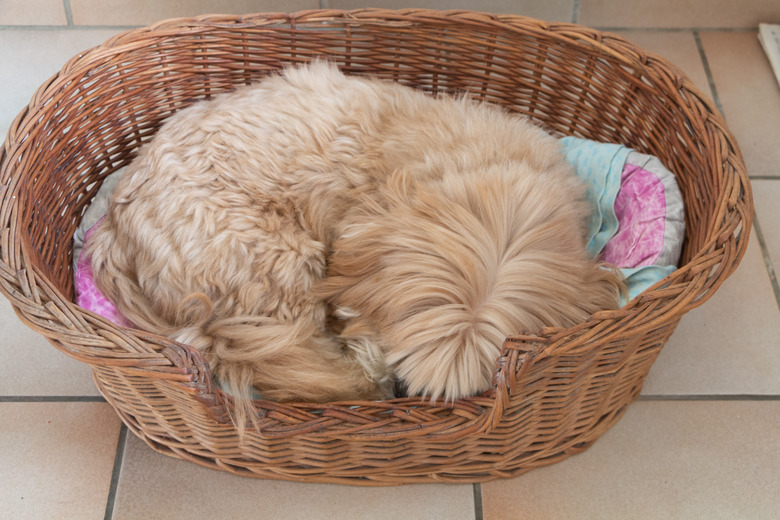Steps To Take Immediately After Your Dog Dies
The death of a pet dog can be traumatic, leaving you overwhelmed when it comes to figuring out what to do with the body. Before you switch into task mode, make sure you have the emotional support you need. Call a friend or family member and ask them to be with you and provide their perspective as you make the decisions about what to do with your pet's body.
Offer as much support as you can to other family members who are present at your pet's death, and let them know you will all get through this together. Be direct with young children, letting them know that the pet's body is done living and he can no longer move it, eat, pee, or play.
Keep him cool
Move your dog's body to the coolest location you can find to give you time to make arrangements. For large dogs, place the body on a blanket you won't mind disposing of with a tarp underneath. Put your pet's body in a cool location, such as on the concrete floor of a basement or garage.
During warm weather, place a second blanket over the top of your dog and lay ice packs on top. Smaller dogs can be wrapped in a towel, wrapped inside a plastic bag, and stored in the refrigerator or freezer.
Call your vet
Your veterinarian is a good source of information for your options when it comes to burial and cremation. In many instances, you can bring your dog's body to the office and they will store it until you decide on your next course of action. Many vets have access to crematory facilities, and you have the option to return for your pet's cremains.
Your vet will be able to give you a list of pet cemeteries in your area, should you decide on interment. Many veterinarians provide after-life services whether or not your pet was a regular patient. You'll also find pet crematoriums and other businesses providing post-mortem care for pets.
Do you want to know?
If your pet has passed suddenly and unexpectedly, you may want to know the cause. Let your veterinarian know when you call his office.
A gross necropsy is where your pet is surgically opened and his tissues are examined visibly. If the cause of death isn't obvious, your vet may send tissue samples to a lab, where they'll be evaluated by a veterinary pathologist.
If you want a funeral for your dog, request a cosmetic necropsy, which makes minimal incisions. If you plan to do a necropsy, get your buddy to your vet as soon as possible. If a delay is necessary, refrigerate your dog's body — but don't freeze it, as ice crystals will damage the tissue.
Do it yourself
One of the fastest and most affordable ways to lay your pet to rest is to bury him in the back yard. Check local ordinances to ensure that burying a pet on your property is legal. You'll need to dig a hole deep enough to cover your dog with about 3 feet of dirt to prevent odors and keep other animals from digging up the body. Another affordable option is to bring your dog to an animal control facility for cremation. The cost is nominal, but you usually won't receive the pet's ashes. Some municipal areas provide dead animal pick-up services for little or no cost.
Always check with your veterinarian before changing your pet's diet, medication, or physical activity routines. This information is not a substitute for a vet's opinion.
